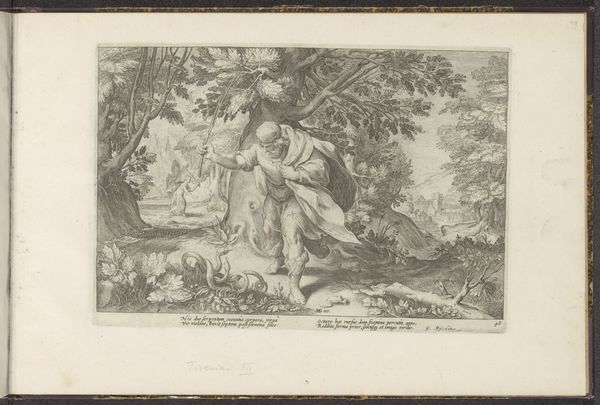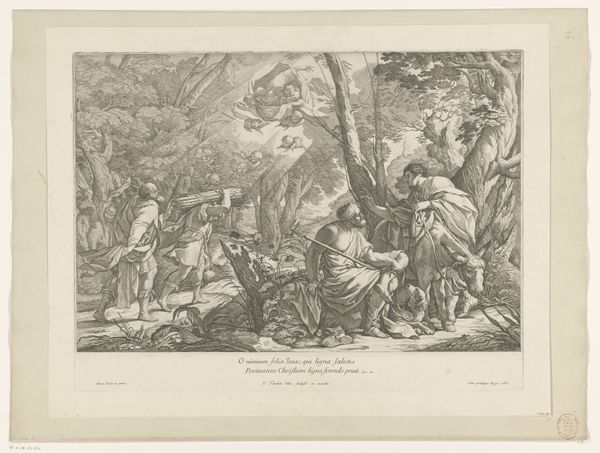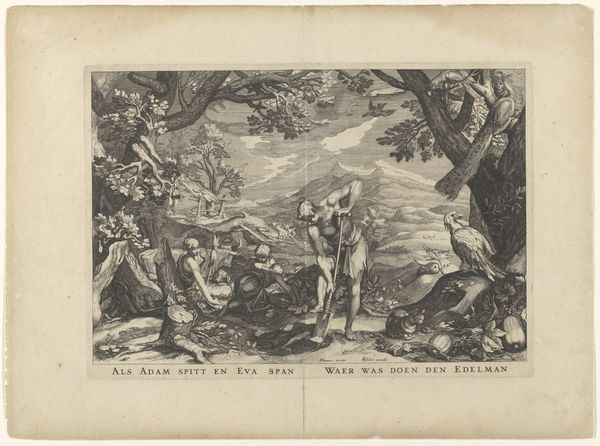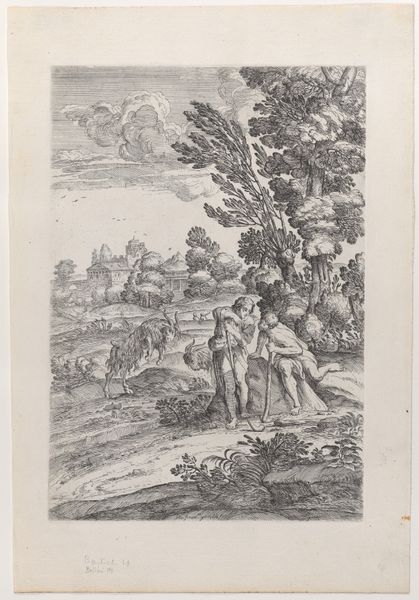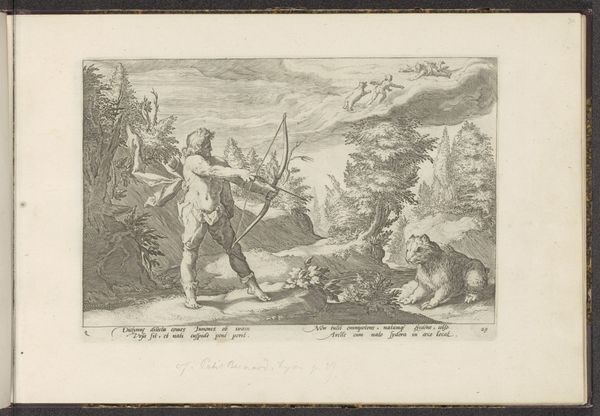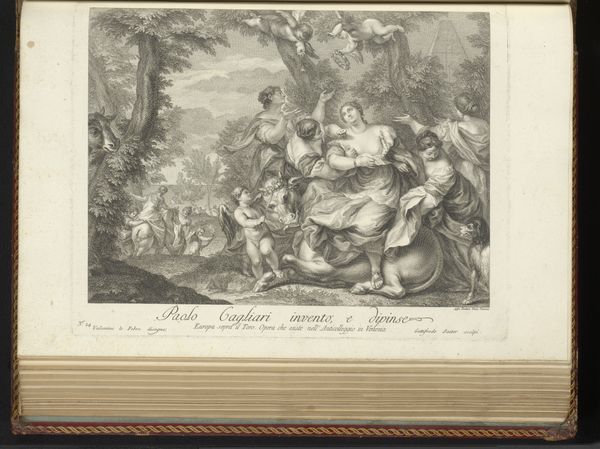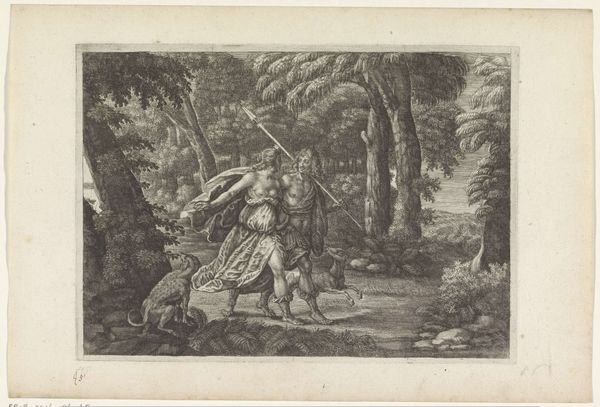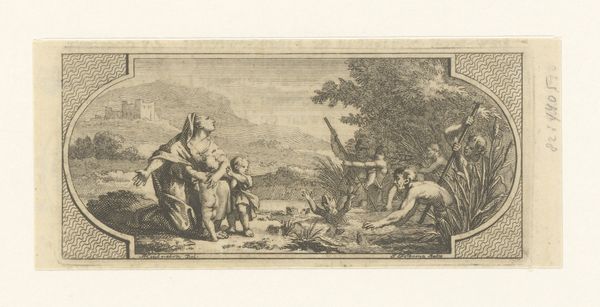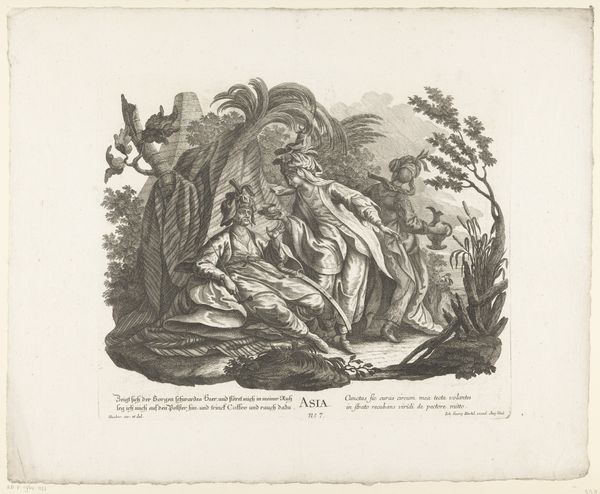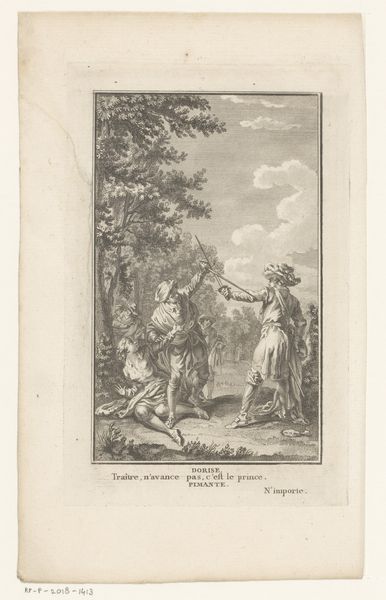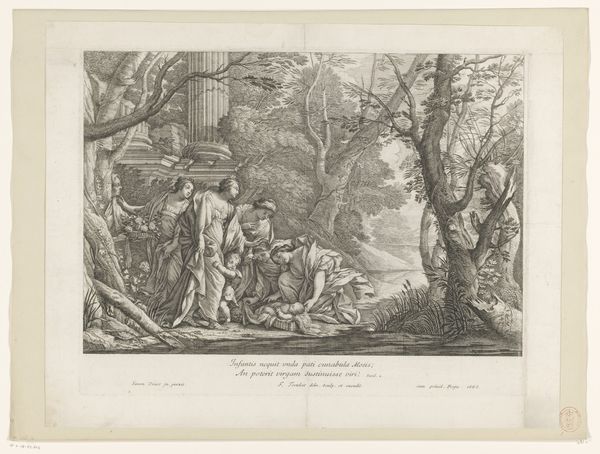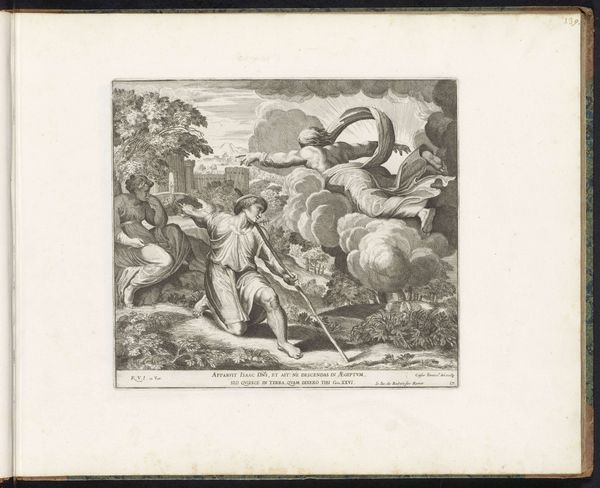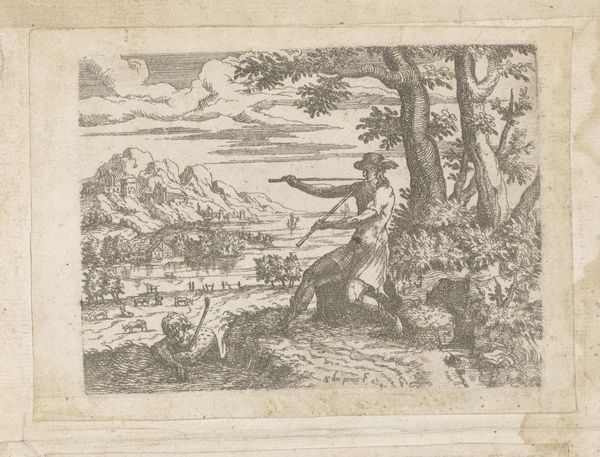
engraving
#
landscape
#
figuration
#
northern-renaissance
#
engraving
Dimensions: height 176 mm, width 255 mm
Copyright: Rijks Museum: Open Domain
Editor: This engraving, "Mercurius en Battus," dating sometime between 1590 and 1728, and attributed to Hendrick Goltzius, has a wonderfully detailed, almost dreamlike quality. All these figures nestled in a lush landscape seem poised for a drama to unfold. What social and political contexts might have shaped this kind of figuration? Curator: That's an insightful starting point. I see in it the complicated dynamics of power and surveillance. The figure of Mercury, a messenger and a trickster god, suggests the circulation of information, which can be a tool of control. Consider, also, the historical anxieties around truth and deception during that period. Could this landscape, with its hidden figures and watchful shepherd, reflect a broader cultural unease about transparency and hidden agendas? Editor: So, beyond the surface-level mythological narrative, it could be interpreted as a commentary on social control? Curator: Precisely. Think about the role of art itself during this period – who commissioned it, who had access to it, and what messages it conveyed. The very act of creating and disseminating such an image has social implications, whether intentional or not. How does the style – the Northern Renaissance – reinforce or subvert such messages? Editor: The level of detail does seem to invite close inspection, suggesting a certain investment in seeing and knowing… almost a desire for complete knowledge. Curator: Exactly! And the pastoral setting? Is it merely decorative, or does it evoke specific social relations between humanity and the natural world, reflecting early capitalist ideas about land and property? Editor: I hadn't considered the landscape itself as a coded space! Thinking about this image through those lenses of power, information, and social relations completely transforms my understanding of it. Thanks. Curator: And thank you for opening this dialogue; thinking about older art within our current socio-political circumstances is not only insightful but necessary.
Comments
No comments
Be the first to comment and join the conversation on the ultimate creative platform.
